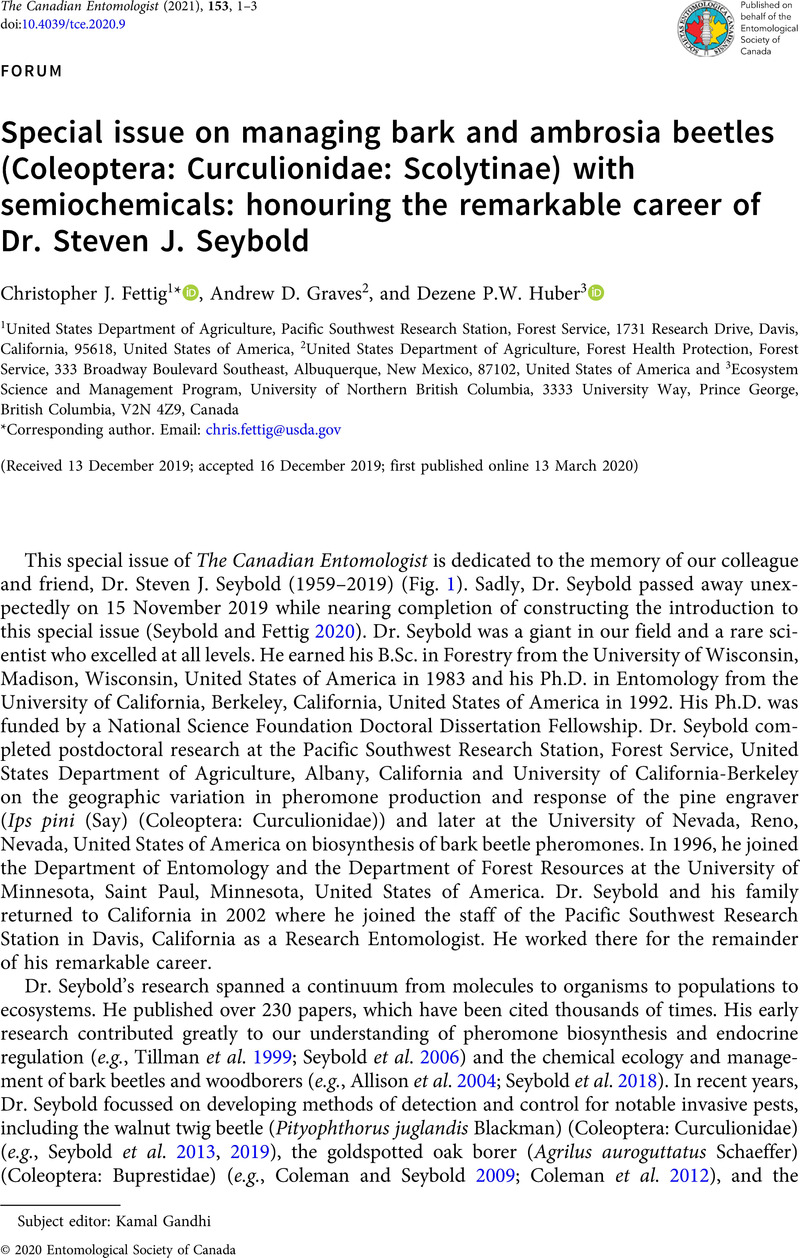Seybold, S.J.,
Dallara, P.L.,
Hishinuma, S.M., and
Flint, M.L. 2013. Detecting and identifying the walnut twig beetle: monitoring guidelines for the invasive vector of thousand cankers disease of walnut. University of California Agriculture and Natural Resources, Statewide Integrated Pest Management Program, Oakland, California, United States of America. Available from
www.ipm.ucanr.edu/PDF/PESTNOTES/WTB_trapping.pdf [accessed 8 December 2019].
Google Scholar 